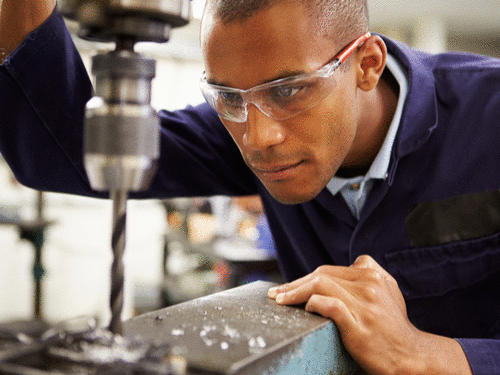
Sometimes I think it’s OK to have a burger and fries because I ordered a Diet Coke. My soft drink tells me I’m watching what I eat, at the same time I’m ignoring the fact that my actual meal has many empty calories. Psychologists call this “cognitive dissonance” — the mental stress that’s caused when we hold two opposing thoughts in our head at the same time.
We do it when it comes to safety as well. Motorists drive faster when they wear seat belts. Construction workers can become more careless when they wear a helmet. Psychology researcher Gerald S. White calls this phenomenon the “theory of risk homeostasis” or risk compensation. White says businesses try to make people safe by removing the repercussions of risk, like requiring work gloves, or making the consequences of carelessness more severe, like increasing fines or threatening being fired. These methods help, but neither approach actually changes people to act more safely.
White recommends motivating workers with positive messages, reminding them why their future will be better by being cautious at work. In a new white paper entitled “Minimize Incidents and Injuries at the Workplace Through Effective Contractor Management,” we outline why businesses should focus on people, not statistics. At the same time, the paper includes statistics to help us understand the scope of the problem. Consider these findings:
- Non-fatal injuries cost employers $60 billion per year in the U.S., and another $90 billion for fatal incidents.
- Self-employed contract workers are four times more vulnerable compared with their counterparts.
- Fatal falls reached an all-time high in 2017, leading the National Institute for Occupational Safety and Health (NIOSH) to call falls the “Number 1 Killer” of contractors and skilled workers.
Many workplace injuries are caused by human error or carelessness. Reviews of fall-related incidents find that the contractors often failed to set up their ladders properly, or didn’t have or use their Personal Fall Arrest System (PFAS) — clipping in safety harnesses or using guardrails. Federal regulators say workers ignoring their PFAS is the most common reason businesses are given a safety citation.
Here are four ways you can protect your company’s bottom line — and, more importantly, provide some proven steps to keep your employees and contract workers safe.
- Third-party monitoring. Look to a supply-chain risk management firm to help suppliers and contractors maintain and improve safety compliance standards.
- Prequalifying suppliers. Find out whether your suppliers provide the necessary training and certifications to reduce workplace injuries and incidents.
- Auditing suppliers. Perform regular audits of health and safety programs, including safety manuals, records and practices.
- Reviewing suppliers. Collect supplier reviews of on-the-job performances regarding safety, responsiveness, quality of work and adhering to a budget.
It’s hard to wrap our minds around the thought that giving workers safety clothing and machinery could make them less safe. Employees and contract workers still need safety equipment, but it must also be paired with two key actions: ongoing positive affirmations, and sticking to a clear-cut plan to make sure everyone makes it home safe.
John Herr is CEO of Avetta, a specialist in global supply-chain risk management.







